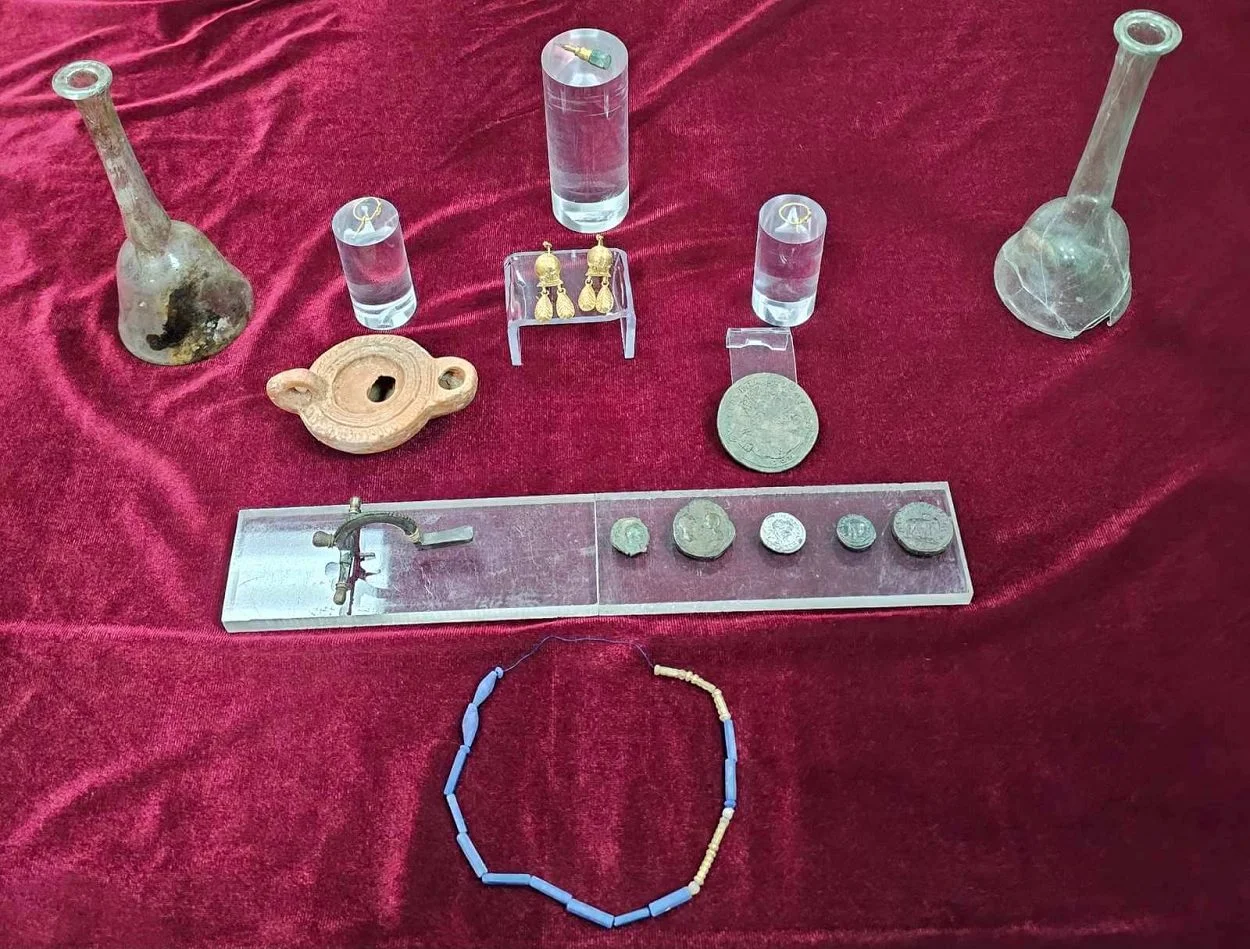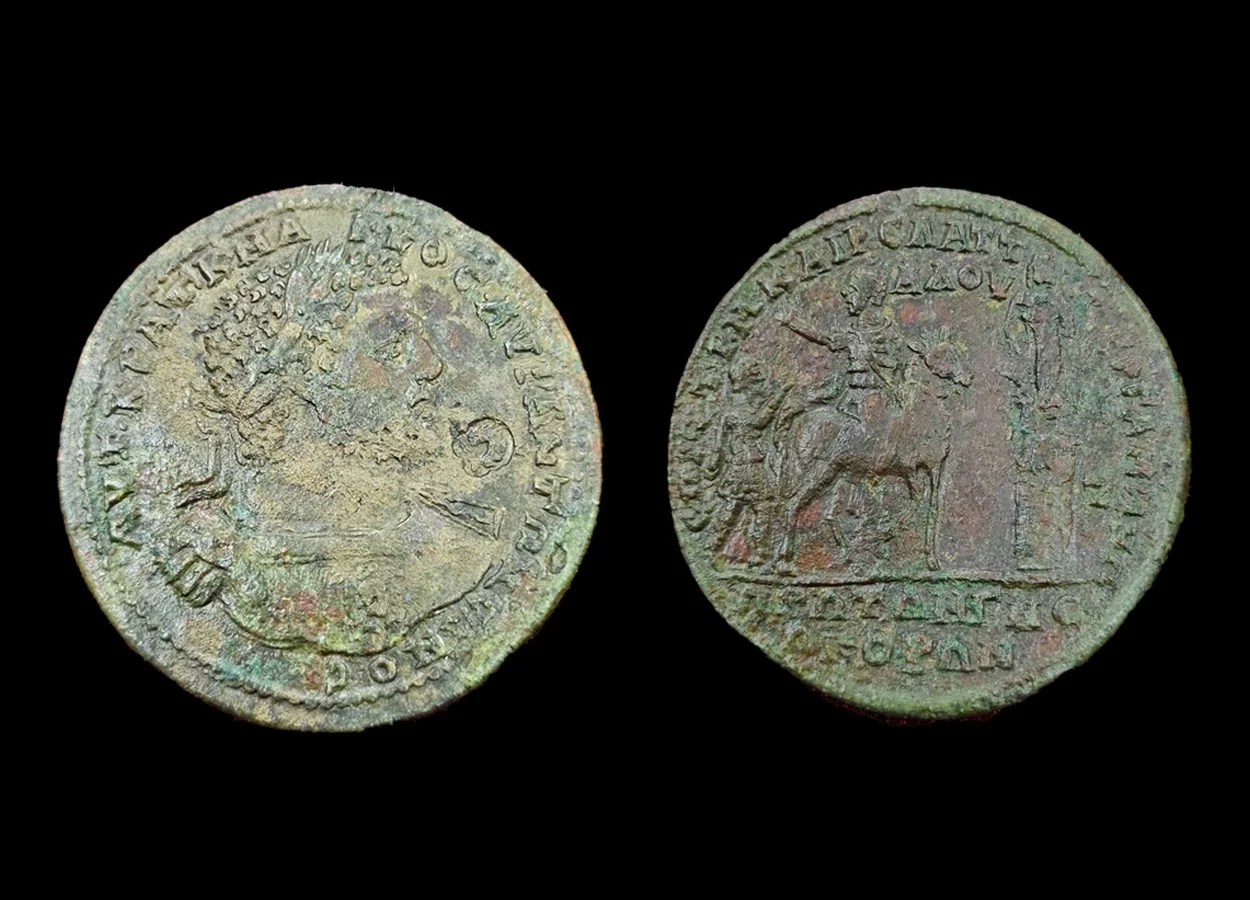A press announcement by the Regional Historical Museum – Veliko Tarnovo, has revealed an extremely rare Roman medallion depicting Caracalla found near the village of Nova Varbovka in southeastern Slovenia.
Marcus Aurelius Antoninus, better known by his nickname of Caracalla, was Roman emperor from AD 198 to 217. His reign is most famously known for the Antonine Constitution, an Edict granting the status of Roman Citizen to all peregrinus (free men).
The medallion was uncovered in a cemetery used by wealthy landowners, who lived on estates in the administrative territory of Nicopolis ad Istrum during the 3rd century AD. High status grave goods, including coins, jewellery, and glass vessels were found in two masonry graves.
According to the announcement: “It can be assumed that the family were high-ranking residents of Nicopolis ad Istrum. Long-term studies of Nicopolis ad Istrum show that the rich landowners lived in their estates in the summer and returned to the city in the winter.”

One of the graves contains the skeletal remains of a young child, who was found with a pair of gold earrings, child-size jewellery made using glass beads, a ceramic amphora, and two lacrymatory bottles made from glass. A lacrymatory, also called a lacrimarium, were small bottles typically used for collecting the tears of mourners at funeral ceremonies.
The second grave contains the remains of an adult man and woman, in addition to gold earrings, a gilt pendant with a bead, and a silver-plated fibula of several types of metal.
The most notable discovery is a rare bronze medallion of Emperor Caracalla, struck in the city of Pergamum in Asia Minor (present-day Turkey). One side of the medallion commemorates the emperor’s visit to the city in AD 214, which has inscriptions written in Ancient Greek.
Header Image Credit : Regional Historical Museum – Veliko Tarnovo





